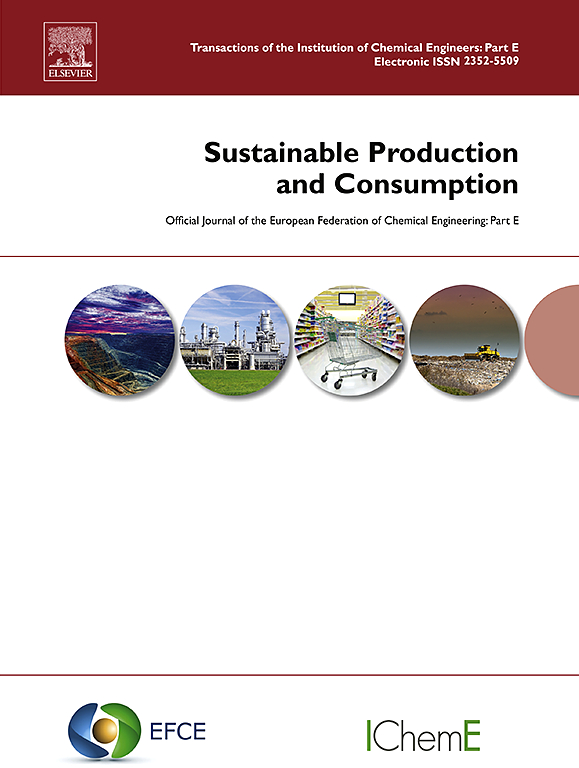Agriphotovoltaics as a profitable land use approach for regions in transformation? - An economic analysis and technical validation of suitable concepts
IF 10.9
1区 环境科学与生态学
Q1 ENVIRONMENTAL STUDIES
引用次数: 0
Abstract
The study explores efficient land use models and their contribution to the energy transition for transformation regions from the perspective of Agriphotovoltaics (APV) and examines the economic viability of APV using the example of the model region in the Rhenish lignite mining area. The high population density of the region and the simultaneous phase-out of fossil fuels make APV a promising solution for sustainable energy generation and efficient land use. Based on a mixed quantitative and qualitative research approach, the economic feasibility of potential suitable systems in the regions' main agricultural activity of arable farming such as vertical and high-mounted APV systems are analyzed, considering valid feed-in tariffs and agricultural factors' impact on profitability. Results show that current remuneration structures, especially national tariffs, are deemed non-viable. Vertical systems achieve stable profitability when higher tariffs of 0.09€/kWh outside the national tariff are considered, and show better profitability compared to high-mounted systems due to lower investment costs. Electricity sales overshadow agricultural revenue and reduce agriculture's influence on feasibility in arable farming settings that are typical for regional agriculture. Experts view APV in arable farming critically, expecting limited synergy and compatibility challenges. However, a funding measure from the state government amounting to 25% of the acquisition costs significantly increases the profitability of even the more expensive, high-mounted APV systems and is a valuable example of how innovative regional development concepts can be successfully promoted. The methodology presented here is transferable to other regional research approaches and provides practical guidance for land-efficient regional development.
农业光伏发电是转型地区的一种有利可图的土地利用方式?对合适的概念进行经济分析和技术验证
本研究从农业光伏(APV)的角度探讨了高效土地利用模式及其对转型地区能源转型的贡献,并以莱茵褐煤矿区为例,检验了APV模式的经济可行性。该地区的高人口密度和同时逐步淘汰化石燃料使APV成为可持续能源生产和有效土地利用的有希望的解决方案。基于混合定量和定性研究方法,考虑到有效的上网电价和农业因素对盈利能力的影响,分析了该地区主要农业活动中潜在合适系统的经济可行性,如垂直和高挂APV系统。结果显示,目前的薪酬结构,特别是国家关税,被认为是不可行的。考虑到国家电价之外0.09欧元/千瓦时的较高电价,垂直系统实现了稳定的盈利能力,并且由于投资成本较低,与高安装系统相比,垂直系统表现出更好的盈利能力。电力销售掩盖了农业收入,并降低了农业对区域农业典型的可耕农业环境可行性的影响。专家们对APV在耕地农业中的应用持批判态度,预计其协同效应有限,并面临兼容性挑战。然而,来自州政府的25%的资金措施大大提高了昂贵的高安装APV系统的盈利能力,这是如何成功推广创新区域发展理念的一个有价值的例子。这里提出的方法可转移到其他区域研究方法,并为有效利用土地的区域发展提供实际指导。
本文章由计算机程序翻译,如有差异,请以英文原文为准。
求助全文
约1分钟内获得全文
求助全文
来源期刊

Sustainable Production and Consumption
Environmental Science-Environmental Engineering
CiteScore
17.40
自引率
7.40%
发文量
389
审稿时长
13 days
期刊介绍:
Sustainable production and consumption refers to the production and utilization of goods and services in a way that benefits society, is economically viable, and has minimal environmental impact throughout its entire lifespan. Our journal is dedicated to publishing top-notch interdisciplinary research and practical studies in this emerging field. We take a distinctive approach by examining the interplay between technology, consumption patterns, and policy to identify sustainable solutions for both production and consumption systems.
 求助内容:
求助内容: 应助结果提醒方式:
应助结果提醒方式:


